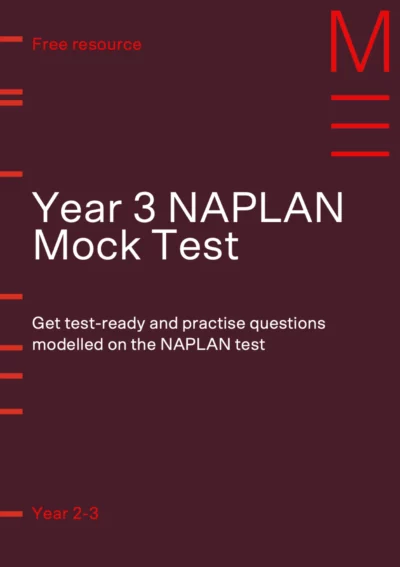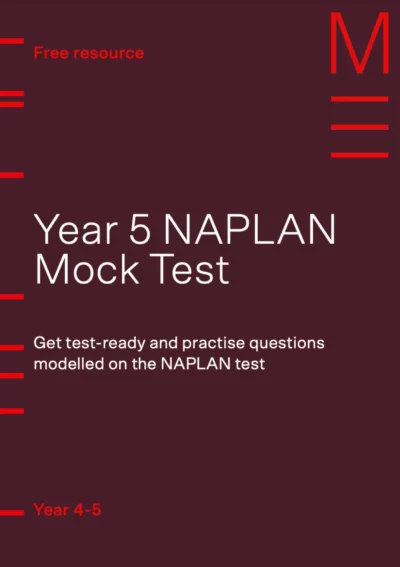Welcome to Matrix Education
To ensure we are showing you the most relevant content, please select your location below.
Select a year to see courses
Learn online or on-campus during the term or school holidays
Learn online or on-campus during the term or school holidays
Learn online or on-campus during the term or school holidays
Learn online or on-campus during the term or school holidays
Learn online or on-campus during the term or school holidays
Learn online or on-campus during the term or school holidays
Learn online or on-campus during the term or school holidays
Get HSC Trial exam ready in just a week
Get HSC exam ready in just a week
Select a year to see available courses
Science guides to help you get ahead
Science guides to help you get ahead
Is your child sitting NAPLAN soon? Find out exactly what NAPLAN is, what it is used for and what you can do to help your child.

Join 75,893 students who already have a head start.
"*" indicates required fields

Join 8000+ students each term who already have a head start on their school academic journey.
NAPLAN is an Australian-wide performance measure for students in primary school and high school. Here, we explain what it means for you and your child.
NAPLAN stands for National Assessment Program for Literacy And Numeracy. The NAPLAN tests are a set of written examinations for students in Year 3, 5, 7 and 9. While most students end up participating, NAPLAN is not compulsory. Parents and carers can choose to withdraw their child from sitting the test.
The NAPLAN tests are designed to measure the literacy and numeracy skills of students in comparison to their peers in the same year group. Since students sit the NAPLAN tests every two years from Years 3 to 9, they can be used as a rough indicator of a student’s progress in literacy and numeracy.
Schools also use NAPLAN results to assess how effective their educational program is. In saying that, NAPLAN results are not used to decide admission into university or other tertiary education.
Get test-ready and practice questions modelled on the NAPLAN test. Fill out your details below to get this resource emailed to you. "*" indicates required fields
Free Year 3 NAPLAN Mock Test

Free Year 3 NAPLAN Mock Test
Some schools use NAPLAN results to determine which students are accepted into their enrichment or other gifted learning streams. Some high schools also use these results to determine which students they will accept into their school.
If your child is seeking entry into a high school and they request a portfolio of your child’s achievements, it is likely that they will be interested in their NAPLAN results. Every school has its own ways of selecting students, so it’s important that you contact the specific school to clarify any concerns you have.
In 2017, NESA implemented a rule that required students to meet a minimum standard before they were allowed to undertake the HSC in 2020. This meant that Year 9 students needed to achieve a Band 8 or higher in each NAPLAN tests, or otherwise sit a corresponding NESA minimum standard online test. This rule has since been scrapped, so as of the time of writing, students’ NAPLAN results do NOT impact their HSC.
Please note that NAPLAN results are NOT used to determine entry into Selective Schools in Year 7. In this case, schools only consider the student’s results in Selective School Test. Similarly, schools only consider the student’s results in the Opportunity Class Placement Test for entry into Opportunity Classes in Year 4.
The Australian Curriculum, Assessment and Reporting Authority (ACARA) is responsible for developing NAPLAN. The ACARA is actually the same organisation that makes the Australian curriculum and reports data on student learning and performance. They are an independent statutory authority that works under the Department of Education.
As of 2022, most schools will conduct the NAPLAN tests online, rather than through the traditional paper method. The Year 3 writing test is the only part of NAPLAN that will still be completed on paper.
In late January/early February, before the NAPLAN testing period in March, students will have the opportunity to do practice tests on the online platform to familiarise themselves with the content and format of NAPLAN Online.
There are four NAPLAN tests.
| Test | What content will be examined? | Duration | NAPLAN online: When will the test be scheduled? |
| Writing | Students will write either a narrative or persuasive piece in response to a given stimulus. | 40 min (Year 3) 42 min (Year 5, 7, 9) | 1st day (Year 3) 1st or 2nd day (Year 5, 7, 9) |
| Reading | Students will answer questions based on provided imaginative, persuasive and informative texts. | 45 min (Year 3) 50 min (Year 5) 65 min (Year 7, 9) | To be completed after the writing test |
| Conventions of language | Students will be asked questions on spelling, grammar and punctuation. | 45 mins | To be completed after the reading test |
| Numeracy | Students will be assessed on their understanding of number and algebra, measurement and geometry, and statistics and probability. | 45 min (Year 3) 50 min (Year 5) 65 min (Year 7, 9) | To be completed after the conventions of language test |
Students in different grades do not sit the same examination because the tests are meant to be of a difficulty that suits each year group. In the past, there were two separate Numeracy tests for high school students (i.e., those in Years 7 and 9): a calculator test and a non-calculator test.
The NAPLAN test questions can require a multiple choice response, a short-written response or other fixed responses supported by the technology. The only NAPLAN test that requires an extended response is ‘Writing’.
You can find the past NAPLAN test papers and answers from 2008 to 2016 on the ACARA website here:
Students receive scores for each test (Reading, Writing, Language conventions, Numeracy) separately. Along with their raw scores, they will see their performance presented on a band scale. A higher band indicates a better performance.
These band scales are specifically designed so that “any given score represents the same level of achievement over time”. In other words, if a student scores 700 in Reading in both Years 3 and 5, it should mean that their performance is consistent and has not improved or declined. In the same sense, if a student scores 700 in Year 3 and 900 in Year 5, it should mean that they’ve improved.
ACARA also provides a “national minimum standard” on this band scale to indicate the “minimal skills expected at that year level”.
You can see what these bands look like below.
Here’s a summary of the diagram:
1. Students in Year 3 receive scores from Band 1 to Band 6 (The national minimum standard is Band 2 for students in this grade)
2. Students in Year 5 receive scores from Band 3 to Band 8 (The national minimum standard is Band 4 for students in this grade)
3. Students in Year 7 receive scores from Band 4 to Band 9 (The national minimum standard is Band 5 for students in this grade)
4. Students in Year 9 receive scores from Band 5 to Band 10 (The national minimum standard is Band 6 for students in this grade)
Schools conduct NAPLAN testing every year in March. Note that students will only be invited to participate if they are in Years 3, 5, 7 or 9 in that year. One of the advantages of NAPLAN online tests is that students can catch up on any missed tests during the 9-day assessment window. So if your child is not feeling well or can’t attend some of their tests for some other reason, they will have the chance to sit these exams later in the assessment window. Please note that, however, once the 9-day assessment window has passed, no individual students can sit NAPLAN tests.
You can find past NAPLAN papers from 2012-2016 on the ACARA website, here. Please note that the format has changed slightly, so use these past papers as a general guide of what to expect.
You are able to test the NAPLAN online system on their public demonstration system. Below are the links to the sample tests for each year group.
| Demo Site Link | Demo site test content |
| Year 3 |
|
| Year 5 |
|
| Year 7 |
|
| Year 9 |
|
Get test-ready and practise questions modelled on the NAPLAN test. Fill out your details below to get this resource emailed to you. "*" indicates required fields
Free Year 5 NAPLAN Mock Test Download

Free Year 5 NAPLAN Mock Test Download
Written by Matrix Education
Matrix is Sydney's No.1 High School Tuition provider. Come read our blog regularly for study hacks, subject breakdowns, and all the other academic insights you need.© Matrix Education and www.matrix.edu.au, 2025. Unauthorised use and/or duplication of this material without express and written permission from this site’s author and/or owner is strictly prohibited. Excerpts and links may be used, provided that full and clear credit is given to Matrix Education and www.matrix.edu.au with appropriate and specific direction to the original content.